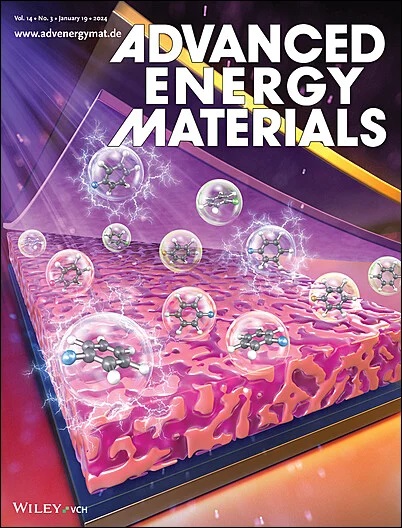Ultralong-Life Aqueous Ammonium-Ion Batteries Enabled by Unlocking Inert-Site of Medium-Entropy Prussian Blue Analogs
IF 24.4
1区 材料科学
Q1 CHEMISTRY, PHYSICAL
引用次数: 0
Abstract
Prussian blue analogs (PBAs) have been heralded as promising alternative cathodes for aqueous ammonium-ion batteries (AAIBs) owing to their chemical flexibility at the molecular level and eco-friendliness. However, the low capacity, irreversible phase, and structure transition are the enormous challenges toward practical application. Herein, an entropy-regulating strategy is proposed to boost both specific capacity and structural stability by introducing Cu, Ni, Co, Mn, and Fe at the 4b sites in PBAs (CNCMF-PBAs). The synergistic effect of randomly dispersed metal elements creates abundant redox centers and enhances structural durability. This inhibits the dissolution of transition metal elements and facilitates a highly reversible phase transition between cubic and tetragonal structures with minimal lattice strain (only 0.8%) for NH4+ (de)intercalation. Moreover, it is interesting to find that this gradually growing cathode capacity roots from the activation of Cu2+/Cu+, Mn3+/Mn2+, and Ni3+/Ni2+ pairs by entropy induction at low voltage region. As a result, the CNCMF-PBAs cathode achieves a high reversible specific capacity of 101.2 mAh g−1 without attenuation over 45 000 cycles (lasting over 180 days) at 20 C. This study provides a substantial advance on PBAs cathode materials with excellent NH4+ storage and rapid multi-electron transfer kinetics.

通过释放中熵普鲁士蓝类似物的内位实现超长寿命水性铵离子电池
本文章由计算机程序翻译,如有差异,请以英文原文为准。
求助全文
约1分钟内获得全文
求助全文
来源期刊

Advanced Energy Materials
CHEMISTRY, PHYSICAL-ENERGY & FUELS
CiteScore
41.90
自引率
4.00%
发文量
889
审稿时长
1.4 months
期刊介绍:
Established in 2011, Advanced Energy Materials is an international, interdisciplinary, English-language journal that focuses on materials used in energy harvesting, conversion, and storage. It is regarded as a top-quality journal alongside Advanced Materials, Advanced Functional Materials, and Small.
With a 2022 Impact Factor of 27.8, Advanced Energy Materials is considered a prime source for the best energy-related research. The journal covers a wide range of topics in energy-related research, including organic and inorganic photovoltaics, batteries and supercapacitors, fuel cells, hydrogen generation and storage, thermoelectrics, water splitting and photocatalysis, solar fuels and thermosolar power, magnetocalorics, and piezoelectronics.
The readership of Advanced Energy Materials includes materials scientists, chemists, physicists, and engineers in both academia and industry. The journal is indexed in various databases and collections, such as Advanced Technologies & Aerospace Database, FIZ Karlsruhe, INSPEC (IET), Science Citation Index Expanded, Technology Collection, and Web of Science, among others.
 求助内容:
求助内容: 应助结果提醒方式:
应助结果提醒方式:


